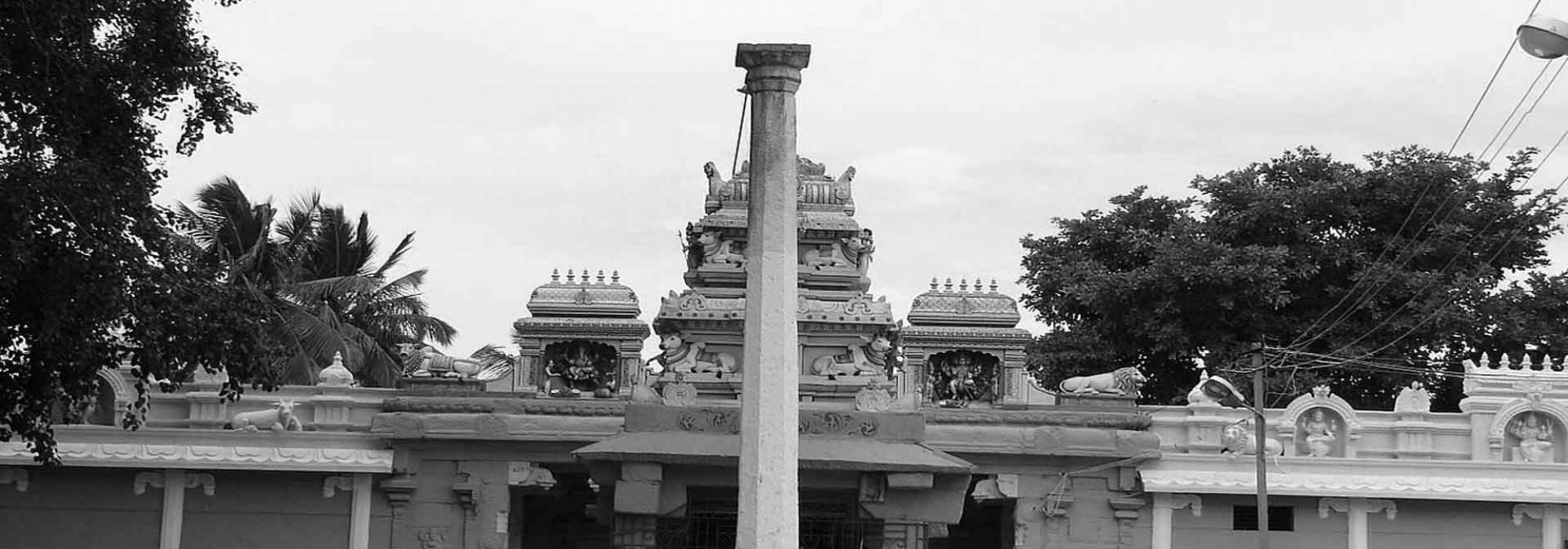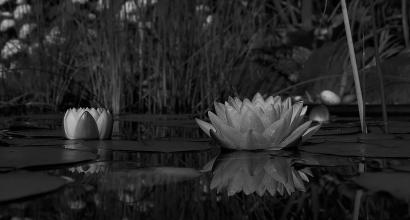There once lived an elderly veśyā who went by the name Sītakka in the Guniguntipalya area of Mulubagilu town. She had a foster daughter. I remember her name to be Ratnāsānī. In those days, the Bharatācārya[1] who lived in our town was a vaidika (a Vedic scholar/someone who follows and practices the Vedic lifestyle), Panasakayala Venkatasubbabhatta. I must have been around seven-eight years of age when I saw him. He was around seventy. He was a respected person in the town’s assembly of connoisseurs. Once, Venkatanarayanabhatta and such other connoisseurs requested Venkatasubbabhatta to perform. I more or less remember the reply given by Venkatasubbabhatta: “Oh come on – I have already turned seventy. My beard and moustache have diminished. Face and body have become weak. Now why are you asking to see me perform? When there is no zeal in the body, performance becomes a parody. Whatever is to be done now, I have to make-do with these … They will not realise it; I will not forget it.
Nīku pāṭham ceppi nāku mānampōya
nīku vaccēlēdu nāku marcēlēdu”
(Having taught you, I lost my honour. You could not get it; I could not forget it)
He would ridicule by interspersing this line in between the song in the Khamaj rāga.
Teaching Method
The house at which he conducted his classes was on the street that I used to take to go to school. In the hallway of the house, on the walls both on the northern side and the southern side, there were pegs that were firmly attached. Ropes were affixed to the pegs and were fastened to the legs of the dance students – like horses being tethered. The purpose of these binds was to ensure that the student neither stepped ahead of the set line nor stepped behind from another set line. In this manner, in order to confine the boundaries of the dancing area, those ropes were arranged.
Even in this kind of a marked area for dancing, the footwork can go wrong, is it not? It would only result in getting hit on the heels.
In order to maintain the rhythm (tāḷa), Venkatasubbabhatta had a plank with him and a stubby piece of wood to hit on it. By maintaining the tāḷa with the said Taṭṭukaṭṭige, he would indicate the movement of the feet of the dancer in this manner:
thei thakka thom – thā thakka thom
tadigiṇa tadigiṇa tom – thā thā thakkiṭṭa thom
By reciting the Śollukaṭṭus (syllables) in this manner, and by striking on the heels, if the dancer’s footwork was incorrect, he would make amends. At times when he got angry – ‘how dare you make a mistake… you…’ saying so he has chided as well. There were times when students would also laugh when he scolded or hit the plank in this manner.
These are merely rudimentary practices in the pedagogy of dance. Abhinaya[2] is far superior to these.
Ratnāsānī
Ratnāsānī was one of the dancers who learnt under the tutelage of Venkatasubbabhatta. The connoisseurs of the town remarked that she had ably learnt the art. Her Gejjepūje[3] was conducted at the house of my family preceptor, Vedamurti Venkataramabhatta. His house was just across from our house. After the pūjā was completed there in the morning, a dance performance was held in the evening at Śrīmadāñaneyasvāmī temple, in the premises of the Śrī Kodaṇḍarāma temple complex. That night or on a night three-four days later, a festival dedicated to Śrīrāma took place. It was customary that the procession would pass by on the street on which our house lay. It was perhaps because my grandparents were trustees or because the preceptor Venkataramabhatta was the one who performed the Gejjepūje, the procession would halt in front of our house for about fifteen-twenty minutes and I got the opportunity to see the dance performance of Ratnāsānī. Back then, the singers were a few women belonging to the same community. The one who was playing the violin was Naṭuva Mādayya. The person playing the maddaḷe was Naṭuva Sītārāmaiyya, the brother of the aforementioned Sītakka. The song that was being sung at that time was in Khamaj rāga:
sāmbaśivā - yenavē
rajatāgiri – sāmbaśivā yenavē
paramadayā - karuḍanu cū
moraliḍuto – niratamunā
parātparā - śubhākarā
girīśa śaṁ-karā yeni
Ratnāsānī would emote this. The disposition of arms and gestures that she would execute at that time became an indicator of blissful experience in the hearts of the spectators. What became important there was not the limbs of the body but histrionics[4] of her gesticulation: the beauty of the disposition of the arms.
.................................
There were many notable dancers in our town:
- Bairakūru Venkatalakṣmāsānī
- The Mother-daughter duo of Jaugupāḷya - Venkatāsānī and Kamalāsānī
- Sisters – Gaurakka and Padmāvati
- Tuḷasāsānī
- Children of Naṭuva Appājayya.
To be continued...
This is the first part of the English translation of the Second essay in D V Gundappa’s magnum-opus Jnapakachitrashaale (Volume 2) – Kalopasakaru. Edited by Arjun Bharadwaj.
Footnotes
[1] The term Bharatacārya used by DVG refers to a person, contextually - a teacher who taught the Art of Bharata. The art of Bharata refers to the dance techniques i.e. abhinaya, covering all aspects of dance discussed by Bharata in the Nāṭyaśāstra.
[2] Abhinaya is the technical term given for the art of communication; communication of the desired concept from the artiste to the connoisseur through the medium of art – which in this case is dance. Bharata discusses four modes of communication in his Nāṭyaśāstra: Āṅgika (through bodily actions), Vācika (through words and sounds), Āhārya (through embellishments) and the all-pervading, Sātvika (through emotions). However, with the passage of time, the term ‘abhinaya’ had become restricted to mean only emotions or facial expression. Although, in most places in this article, DVG has used the term ‘abhinaya’ to suggest the holistic concept of communication itself.
[3] Gejjepūje refers to a traditional ritual to be performed for a dancer, where she worships and ties the anklets onto her feet for the first time in the presence of her Guru and presents a dance performance which marks the formal beginning for her as a stage performer.
[4] Histrionics is the technical term given in the English translations of Nāṭyaśāstra to discuss ‘abhinaya’, which means communication or dramatization.
Don't miss Prekshaa's annual book launch at 10 am on Sunday, 8 December at Gokhale Institute of Public Affairs, Bangalore.
Click here to know more!











































